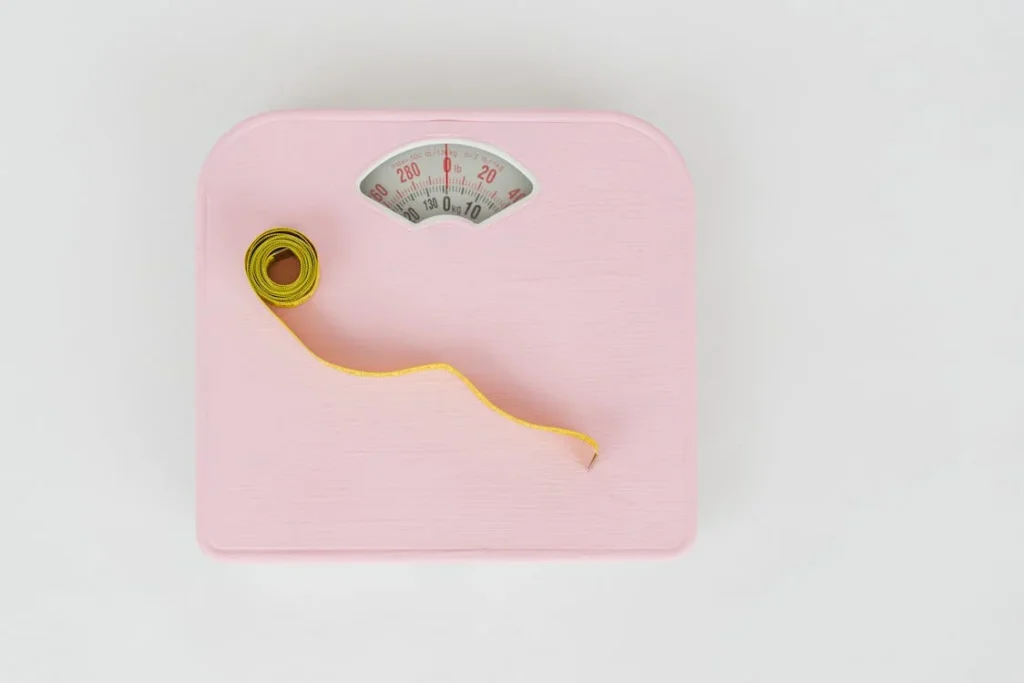After an amputation, the body goes through significant changes. Healing, adapting to a prosthesis, and adjusting to a new lifestyle all take time. During this transition, many people experience weight gain, which can make daily activities and prosthetic use more challenging.
Weight gain after amputation happens for many reasons. Reduced physical activity, changes in metabolism, and emotional factors all play a role. While gaining some weight might seem normal, too much weight can affect balance, mobility, and the overall fit of a prosthetic limb. Maintaining a healthy weight is not just about appearance—it directly impacts comfort, energy levels, and long-term health.
The good news is that post-amputation weight gain can be managed and even prevented with the right approach. Understanding the causes of weight gain and making small, consistent lifestyle changes can help you stay active, improve prosthetic function, and enhance overall well-being.
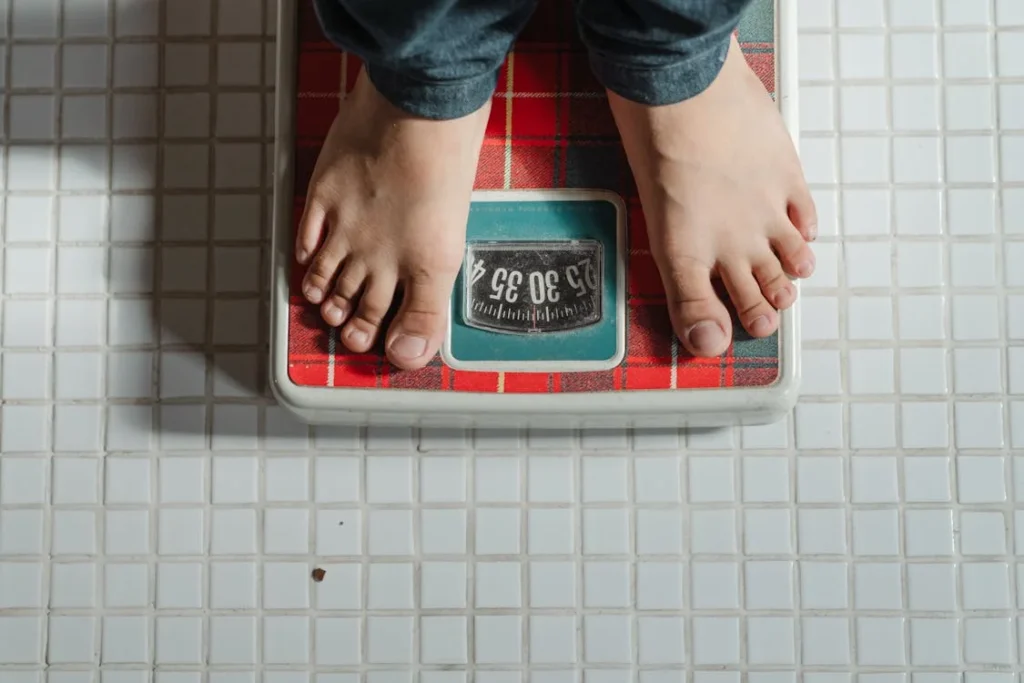
Why Does Weight Gain Happen After Amputation?
Weight gain after an amputation is common, but understanding why it happens can make it easier to prevent. The body undergoes physical, emotional, and metabolic changes that can all contribute to an increase in weight.
These changes often happen gradually, making it easy to overlook them until they start affecting mobility and overall health.
Reduced Physical Activity and Muscle Loss
One of the biggest reasons for post-amputation weight gain is reduced movement. After surgery, recovery takes time, and activity levels naturally drop.
Walking, exercising, and even daily activities like climbing stairs or carrying groceries may become more difficult, leading to a more sedentary lifestyle. When physical activity decreases, the body burns fewer calories, making it easier to gain weight.
Muscle loss, known as muscle atrophy, also plays a role. The muscles in the remaining limb and other parts of the body may weaken due to reduced use.
Since muscle burns more calories than fat, losing muscle slows down metabolism, making weight gain more likely even if food intake remains the same. Without strength training or regular movement, the body stores more fat, leading to gradual weight gain.
Changes in Metabolism and Energy Needs
The body’s energy needs change after amputation. Many people assume that losing a limb means burning fewer calories, but that’s not entirely true.
While daily movement may decrease, the body still requires energy to heal, adapt, and support prosthetic use. However, without a clear understanding of these changes, people may continue eating the same way they did before amputation, leading to an imbalance where calorie intake exceeds calorie use.
Additionally, stress from surgery and recovery can trigger hormonal changes that affect metabolism. The body may become more resistant to insulin, making it easier to store fat. Over time, this can lead to unintended weight gain, even without significant changes in diet or activity.
Emotional Eating and Stress
The emotional impact of an amputation is significant. Feelings of frustration, sadness, or stress can lead to changes in eating habits. Many people turn to food for comfort, eating more than they need or choosing high-calorie, processed foods.
Emotional eating often happens without realizing it, especially during times of stress or boredom.
Stress also affects hormones like cortisol, which can increase appetite and lead to cravings for sugary or fatty foods. When combined with reduced activity, these eating patterns can quickly lead to weight gain.
Recognizing these habits and finding alternative ways to manage emotions is key to maintaining a healthy weight.
Prosthetic Fit and Mobility Challenges
Weight changes, even small ones, can affect the way a prosthetic limb fits. If a prosthesis becomes too tight or too loose, it can cause discomfort, reduce mobility, and make it harder to stay active.
Many people become less motivated to move when their prosthetic limb doesn’t feel comfortable, leading to a cycle where reduced movement leads to more weight gain, making prosthetic use even more difficult.
Regular prosthetic adjustments are necessary, but maintaining a stable weight helps ensure a better, more comfortable fit. When weight fluctuates significantly, it may require frequent socket changes or modifications, which can be costly and time-consuming.
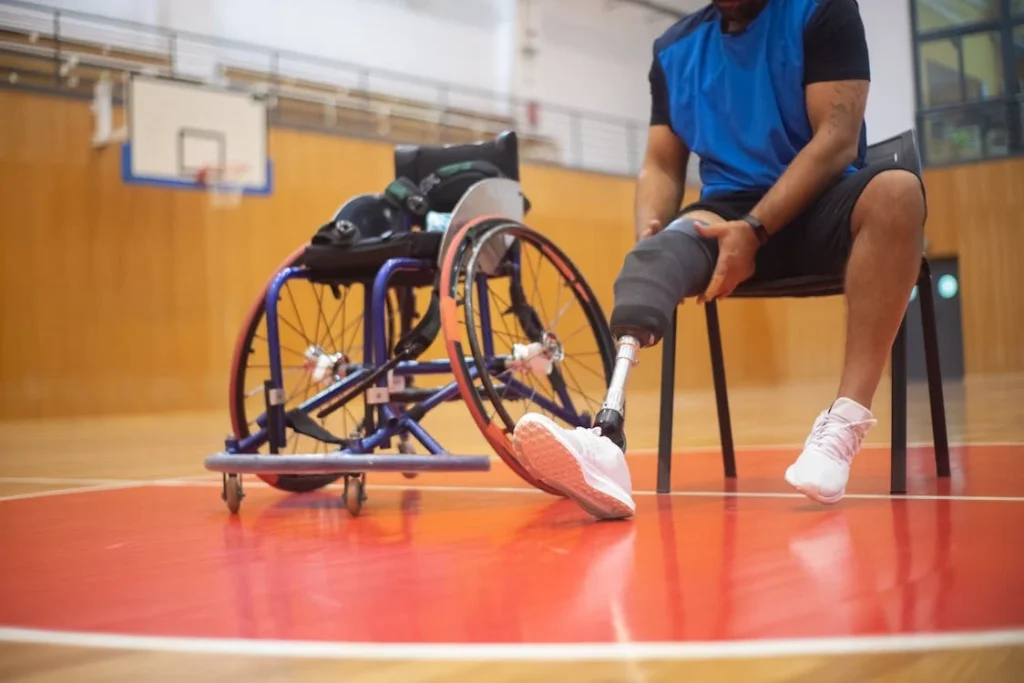
How Weight Gain Affects Prosthetic Use and Overall Health
Post-amputation weight gain doesn’t just change how you look—it directly impacts mobility, prosthetic function, and long-term health. Even small weight fluctuations can make a big difference in how well a prosthetic limb fits and how comfortable it is to wear.
Understanding these effects can highlight why maintaining a healthy weight is essential for prosthetic users.
Impact on Prosthetic Fit and Comfort
A prosthetic limb is designed to fit snugly against the residual limb, providing stability and ease of movement. When weight increases, the residual limb may change in size and shape, affecting how well the prosthesis fits.
If the socket becomes too tight, it can cause discomfort, skin irritation, and even pressure sores. On the other hand, if weight loss occurs, the prosthesis may feel loose, reducing stability and increasing the risk of falls.
Frequent weight fluctuations mean more adjustments and possible replacements, which can be costly and time-consuming. A stable weight allows for better consistency in prosthetic fit, reducing the need for constant modifications and improving overall comfort.
Decreased Mobility and Energy Levels
Carrying extra weight makes movement more difficult, especially for prosthetic users who rely on balance and core strength to walk efficiently. Extra weight puts more strain on the remaining limbs, making daily activities more exhausting.
Walking with a prosthetic limb already requires more energy than walking with two natural legs, so added weight can make every step feel harder.
For those with lower-limb amputations, excess weight can also increase the risk of joint pain and arthritis. The added pressure on the knee, hip, and lower back can lead to discomfort, limiting mobility further.
Over time, reduced movement can lead to even more weight gain, creating a cycle that becomes harder to break.
Higher Risk of Chronic Health Conditions
Excess weight increases the risk of developing chronic health conditions such as diabetes, high blood pressure, and heart disease. These conditions can slow down wound healing and make it harder to stay active.
For amputees, maintaining good circulation is essential to prevent infections and promote skin health, especially around the residual limb. Poor circulation can lead to skin breakdown, making prosthetic use painful and difficult.
Carrying extra weight also affects balance, making falls more likely. A fall can result in injuries that make it even harder to move, further reducing physical activity levels.
By maintaining a healthy weight, prosthetic users can reduce these risks and improve their overall quality of life.
Emotional and Mental Well-Being
Weight gain after amputation can also take an emotional toll. Changes in body image, frustration with limited mobility, or discomfort in daily activities can lead to feelings of discouragement. Many people struggle with confidence when they feel less in control of their bodies.
However, small, manageable lifestyle changes can make a significant difference. Finding ways to stay active, choosing healthier foods, and seeking support from peers or professionals can improve both physical and emotional well-being.
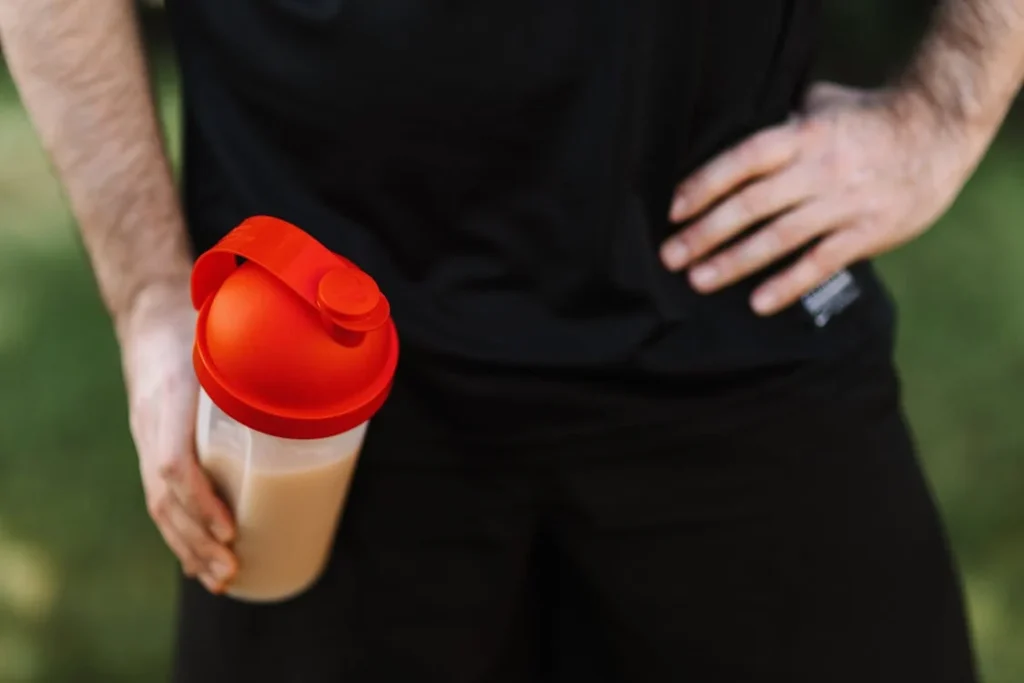
How to Prevent Post-Amputation Weight Gain
Preventing weight gain after an amputation is not about extreme dieting or intense workouts. It’s about making small, sustainable changes that fit into daily life.
A balanced approach to nutrition, physical activity, and emotional well-being can help maintain a healthy weight, improve prosthetic function, and enhance overall quality of life.
Eating for Energy and Weight Stability
The first step to managing weight after amputation is understanding how much energy the body needs. While movement levels may decrease after surgery, the body still requires nutrients to heal, build strength, and support prosthetic use.
Eating too little can slow metabolism, while eating too much can lead to weight gain. The key is to focus on nutrient-dense foods that provide energy without excess calories.
Including a variety of lean proteins such as chicken, fish, beans, and eggs helps maintain muscle mass, which is crucial for staying active and supporting mobility.
Healthy fats from sources like avocados, nuts, and olive oil provide long-lasting energy and keep skin healthy, which is especially important for prosthetic users.
Complex carbohydrates, such as whole grains, vegetables, and legumes, keep blood sugar stable and prevent cravings that lead to overeating.
Processed foods, sugary snacks, and fried foods can contribute to weight gain by adding unnecessary calories without providing important nutrients. Choosing whole, natural foods and staying mindful of portion sizes can help maintain weight without feeling deprived.
Staying Active in a Way That Works for You
Exercise after amputation may look different, but it is still essential for maintaining a healthy weight and overall fitness. Physical activity doesn’t have to be intense to be effective. Even small movements throughout the day can make a big difference in metabolism and energy levels.
For those using a prosthetic limb, walking regularly is one of the best ways to stay active. It strengthens the muscles needed for balance and improves endurance.
If walking long distances is difficult, starting with short walks and gradually increasing time and intensity can help build stamina.
Strength training is another important part of preventing weight gain. Stronger muscles improve prosthetic control, making movement more efficient and reducing strain on the rest of the body.
Simple exercises like seated leg lifts, resistance band training, or light weightlifting can help maintain muscle mass.
Swimming and aquatic therapy are great options for those who want a low-impact exercise. The buoyancy of water reduces strain on the joints while allowing for full-body movement.
For upper-limb amputees, activities like cycling, yoga, and resistance exercises can help keep the body strong and flexible.
Even small changes, like standing up more often, stretching, or doing gentle movements throughout the day, can improve circulation and prevent weight gain. Finding an activity that feels enjoyable and manageable is key to staying consistent.
Managing Stress and Emotional Eating
Weight gain is not always about food and exercise—emotions play a major role as well. Stress, anxiety, and frustration after an amputation can lead to unhealthy eating habits.
Recognizing emotional triggers and finding healthier ways to cope can make a big difference in maintaining a healthy weight.
Practicing relaxation techniques such as deep breathing, meditation, or journaling can help reduce stress and prevent emotional eating. Engaging in hobbies, spending time with supportive friends and family, or seeking counseling can also provide emotional balance.
If emotional eating is a struggle, keeping a food journal can help identify patterns and triggers. Simply becoming more aware of eating habits can lead to healthier choices.
Replacing mindless snacking with alternative activities like going for a walk, drinking herbal tea, or listening to music can help break the cycle of stress eating.
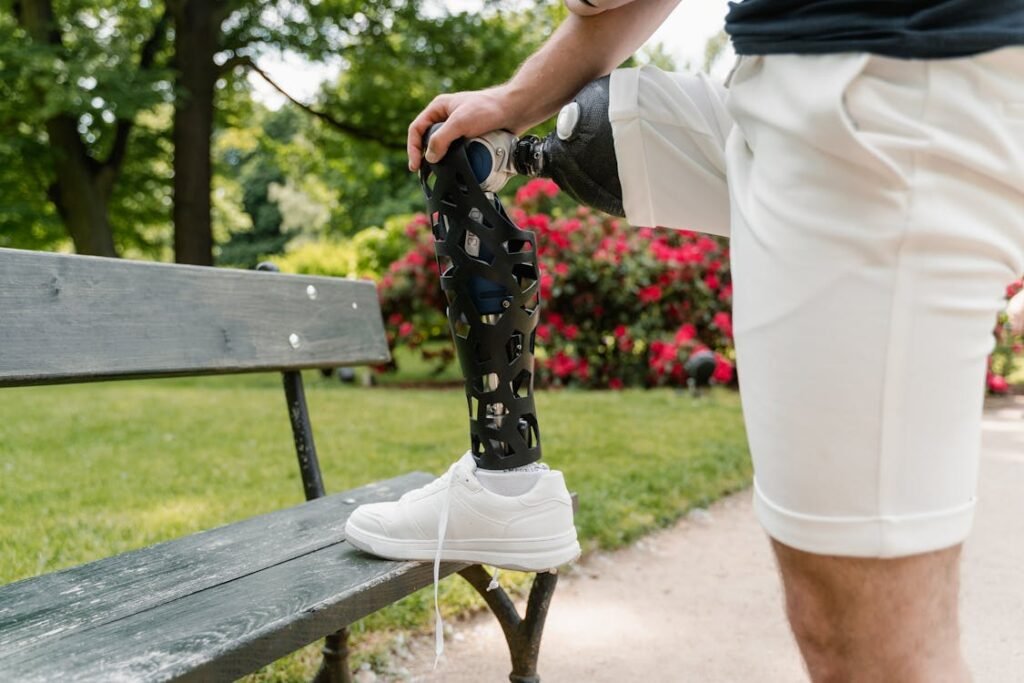
Long-Term Strategies for Maintaining a Healthy Weight
Preventing post-amputation weight gain is not just about short-term fixes—it requires a long-term approach that supports both physical and emotional well-being.
By making small, consistent adjustments to lifestyle habits, maintaining a healthy weight can become second nature rather than a constant struggle.
Building a Routine That Supports Weight Management
A structured daily routine helps maintain a stable weight and keeps the body in balance. Regular mealtimes prevent overeating and help the body regulate hunger signals.
Skipping meals or eating irregularly can lead to extreme hunger, causing people to eat too quickly or make unhealthy food choices. Eating at consistent times each day helps maintain energy levels and prevents unnecessary snacking.
Creating a movement routine also plays a crucial role in preventing weight gain. It doesn’t have to be complicated—even setting aside 20 to 30 minutes for gentle stretching, walking, or strength exercises can improve mobility and help with weight control.
Establishing a habit of regular physical activity makes it easier to stay active without feeling overwhelmed.
Proper sleep is often overlooked but is just as important as diet and exercise. Poor sleep can disrupt hormones that regulate hunger and metabolism, leading to increased cravings for high-calorie foods.
Aiming for 7 to 8 hours of quality sleep each night supports overall health and makes weight management easier.
Adjusting to Changes in Activity Levels
As mobility improves and physical activity increases, the body’s energy needs may change. Many prosthetic users find that once they become more confident in their movement, they are able to engage in more activities than they initially expected.
This increase in movement means that the body burns more calories, which may require slight adjustments in food intake.
On the other hand, if activity levels decrease due to injury, illness, or changes in lifestyle, it’s important to be mindful of eating habits to prevent unwanted weight gain.
Paying attention to hunger cues and avoiding unnecessary snacking can help maintain balance during periods of reduced movement.
Regularly checking in with a prosthetist is also important. Changes in weight can affect how a prosthetic limb fits, so ensuring that the socket and alignment remain comfortable allows for continued mobility.
If weight fluctuations occur, discussing possible adjustments with a professional can improve both comfort and function.
Seeking Support and Staying Motivated
Weight management is easier when there is a strong support system. Engaging with other amputees, joining a fitness group, or working with a physical therapist can provide motivation and encouragement.
Many people find that sharing their experiences with others who understand their journey makes it easier to stay committed to their goals.
Setting realistic, achievable goals can also help maintain motivation. Rather than focusing on a specific number on the scale, it may be more beneficial to set functional goals, such as improving balance, increasing endurance, or reducing discomfort while wearing a prosthetic.
Celebrating small victories—such as walking a longer distance or feeling more energetic—keeps motivation high and reinforces positive habits.
Making peace with the body’s changes is an important part of this process. Weight management should be about feeling strong, capable, and comfortable, not about meeting unrealistic expectations.
Focusing on what the body can do rather than how it looks can help create a healthier and more positive relationship with weight management.
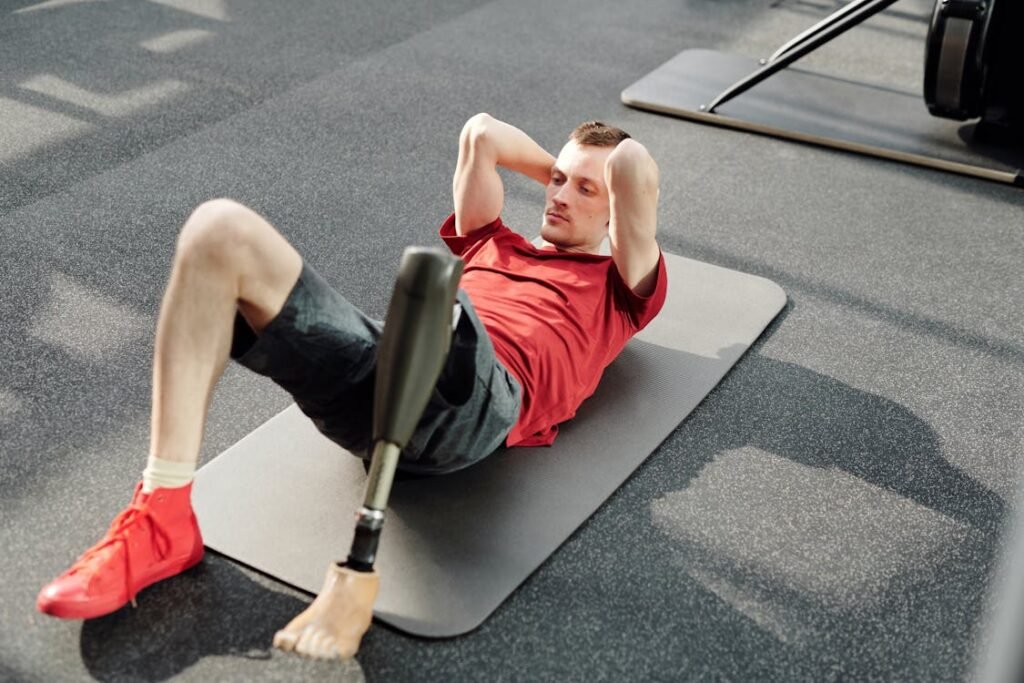
The Role of Adaptive Exercises in Weight Management
Exercise after amputation looks different, but it remains one of the most effective ways to prevent weight gain, improve mobility, and enhance overall well-being.
Adaptive exercises, specifically designed for amputees, allow for safe, controlled movement that builds strength, improves balance, and supports a healthy metabolism.
Unlike traditional workouts, adaptive exercises focus on using available muscles efficiently, ensuring that weight control does not come at the cost of injury or discomfort.
Understanding Adaptive Exercise for Amputees
Adaptive exercises are movements modified to accommodate an individual’s abilities and prosthetic use. They take into account the changes in weight distribution, muscle engagement, and balance that occur after amputation.
These exercises are designed to strengthen the core, improve posture, and enhance endurance without putting unnecessary strain on the body.
For lower-limb amputees, seated or supported exercises can help maintain muscle tone while reducing stress on the residual limb.
Strengthening the upper body and core is essential, as these muscles play a significant role in maintaining balance and stability when walking with a prosthetic.
Upper-limb amputees can benefit from exercises that focus on maintaining shoulder mobility, improving grip strength, and preventing muscle imbalances caused by relying more on the remaining limb.
Core Strength and Balance Training
One of the biggest challenges after amputation is maintaining balance. A strong core is essential for preventing falls, improving posture, and making movements more efficient.
Core exercises like seated leg lifts, abdominal contractions, and stability ball exercises help strengthen the muscles that support the spine and pelvis. These exercises make walking with a prosthetic smoother and reduce the risk of weight gain by keeping the body active.
Standing balance exercises, such as shifting weight from one side to another or practicing controlled movements with the prosthetic limb, can help improve stability.
Using parallel bars, a walker, or a sturdy surface for support can make these exercises safer for those still developing confidence in their mobility.
Cardiovascular Training for Calorie Burn
Cardiovascular exercise is key to preventing weight gain because it helps burn calories, improve heart health, and increase endurance. However, traditional running or high-impact workouts may not be suitable for all amputees.
Instead, low-impact options such as stationary cycling, swimming, or rowing provide an effective cardiovascular workout without excessive stress on the joints or residual limb.
Swimming is particularly beneficial because it allows for full-body movement without the limitations of gravity. The water reduces pressure on the joints, making it easier to move freely while still providing resistance that strengthens muscles.
Adaptive cycling, using either a stationary bike or a handcycle, allows for an effective workout while maintaining stability and control.
Even short bursts of movement, like standing up and sitting down multiple times or practicing controlled stepping with a prosthetic, can increase heart rate and burn calories.
Finding a form of movement that feels enjoyable ensures consistency, which is the most important factor in long-term weight management.
Strength Training for Metabolism Boost
Building and maintaining muscle is crucial for weight control because muscle burns more calories than fat, even at rest.
Strength training exercises, such as resistance band workouts, seated weightlifting, or bodyweight exercises like push-ups and modified squats, can help preserve muscle mass.
Focusing on the muscles that support prosthetic function is particularly important. For lower-limb amputees, strengthening the glutes, thighs, and lower back improves walking efficiency and reduces strain on the remaining leg.
Upper-limb amputees benefit from shoulder and core strengthening to improve posture and prevent overuse injuries on the intact limb.
Staying Active in Daily Life
Structured workouts are valuable, but daily movement is just as important. Simple activities like stretching in the morning, standing up frequently, and engaging in functional exercises (such as reaching, bending, and walking short distances) can help maintain an active lifestyle.
For those who use a wheelchair or spend extended time seated, upper body movements such as arm circles, shoulder presses, and resistance exercises help maintain circulation and prevent muscle loss.
Making movement a natural part of daily routines—whether it’s doing light housework, gardening, or walking with assistance—helps prevent weight gain while improving overall quality of life.

How Nutrition and Meal Timing Affect Post-Amputation Weight Control
While the quality of food is crucial for managing weight, the timing of meals also plays a significant role. Understanding when and how often to eat can help regulate metabolism, prevent overeating, and maintain steady energy levels throughout the day.
For amputees, proper meal timing can also improve digestion, reduce fatigue, and support an active lifestyle with a prosthetic limb.
The Importance of Eating at Regular Intervals
Skipping meals or going long hours without eating can lead to overeating later in the day. When the body goes too long without fuel, hunger hormones increase, making it more likely to crave high-calorie, processed foods.
This can result in large portion sizes at dinner, which often leads to weight gain.
Eating smaller, balanced meals every 3 to 4 hours helps keep metabolism steady. Regular meals provide consistent energy, preventing the sudden blood sugar spikes and crashes that contribute to fatigue and cravings.
Instead of focusing on three large meals, spreading food intake throughout the day helps maintain steady blood sugar levels and supports weight control.
The Best Time to Eat for Energy and Metabolism
The body burns more calories earlier in the day, so front-loading meals with the most nutritious foods can be beneficial. A well-balanced breakfast that includes protein, healthy fats, and fiber jumpstarts metabolism and provides lasting energy.
Skipping breakfast can slow down metabolism and increase hunger later, leading to unhealthy food choices.
Lunch should be the most substantial meal of the day, providing enough fuel for the afternoon when activity levels are higher. A combination of lean protein, whole grains, and vegetables ensures a steady release of energy.
Having a healthy snack in the late afternoon, such as a handful of nuts or yogurt with fruit, prevents extreme hunger at dinner.
Dinner should be lighter than lunch but still balanced. Eating too late at night can disrupt digestion and lead to weight gain, as the body’s metabolism naturally slows down in the evening.
Finishing the last meal at least two hours before bedtime allows the body to process food efficiently without storing excess calories as fat.
Late-Night Eating and Its Impact on Weight Gain
Eating close to bedtime is one of the most common causes of weight gain. Late-night snacking, especially on processed foods, increases calorie intake without giving the body enough time to burn those calories before sleep.
It also affects digestion, leading to discomfort and poor sleep quality, which can further disrupt metabolism.
If hunger strikes before bedtime, choosing a light, protein-rich snack, such as a boiled egg, a small serving of cottage cheese, or a handful of almonds, can provide nourishment without excess calories.
Drinking herbal tea or water can also help manage hunger signals that may be mistaken for thirst.
Mindful Eating to Prevent Overeating
Many people eat out of habit, stress, or distraction rather than true hunger. Practicing mindful eating—paying attention to what, when, and how much is eaten—can prevent overeating.
Simple habits like eating slowly, chewing thoroughly, and avoiding screens during meals help the body recognize fullness signals and prevent unnecessary calorie intake.
Portion control is another key factor. Using smaller plates, measuring servings, and eating until satisfied (rather than stuffed) can help manage weight without feeling deprived.
Recognizing emotional eating triggers and finding alternative ways to cope with stress—such as walking, stretching, or deep breathing—can prevent weight gain caused by non-hunger-related eating.
Conclusion
Post-amputation weight gain is a common challenge, but it is not inevitable. By understanding the causes—such as reduced activity, metabolism changes, and emotional eating—individuals can take proactive steps to maintain a healthy weight. Small, consistent changes in nutrition, exercise, and daily habits can make a significant difference in preventing unwanted weight gain and improving overall well-being.
Eating balanced meals at regular intervals, staying active with adaptive exercises, and managing stress in healthier ways all contribute to better weight control. Maintaining a stable weight not only enhances comfort and mobility but also ensures a better fit for prosthetic limbs, reducing the need for frequent adjustments.
Ultimately, the goal is not perfection but progress. By making mindful choices and seeking support when needed, amputees can enjoy greater independence, energy, and confidence in their daily lives. Weight management after amputation is about creating a lifestyle that supports long-term health, mobility, and a higher quality of life.



